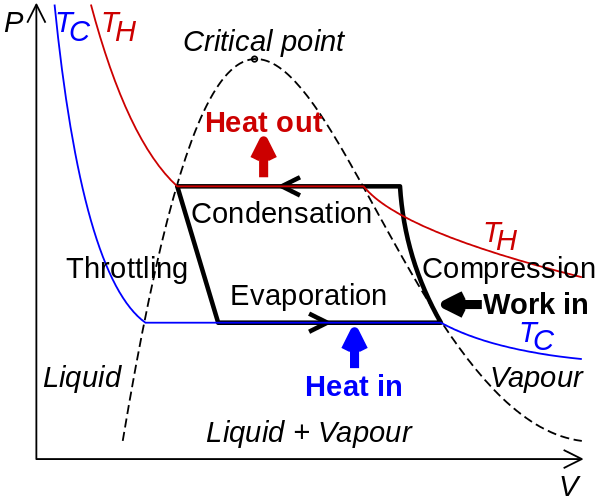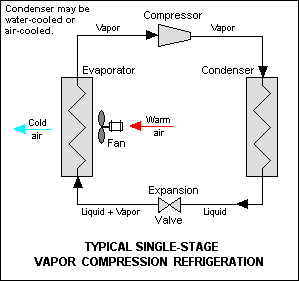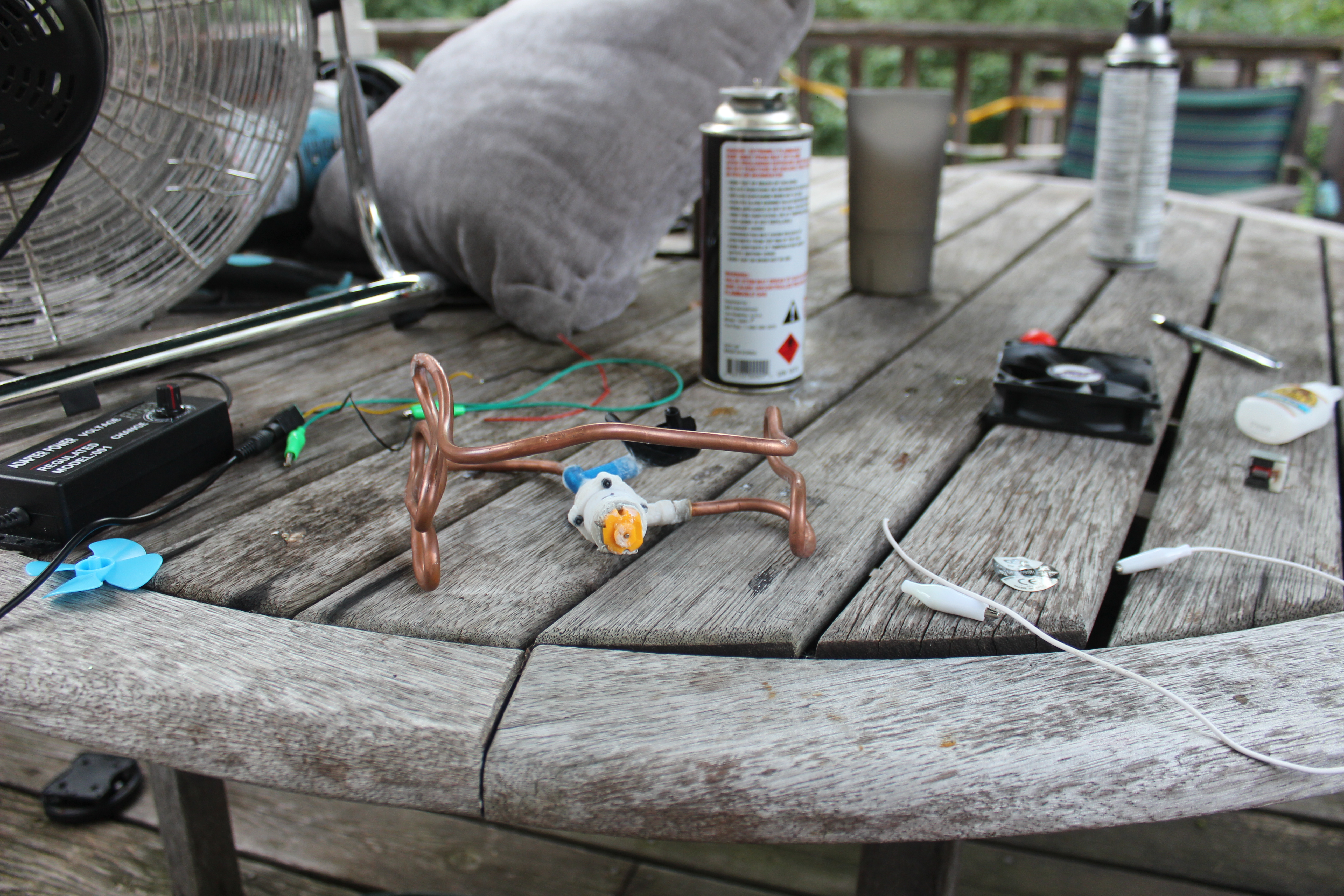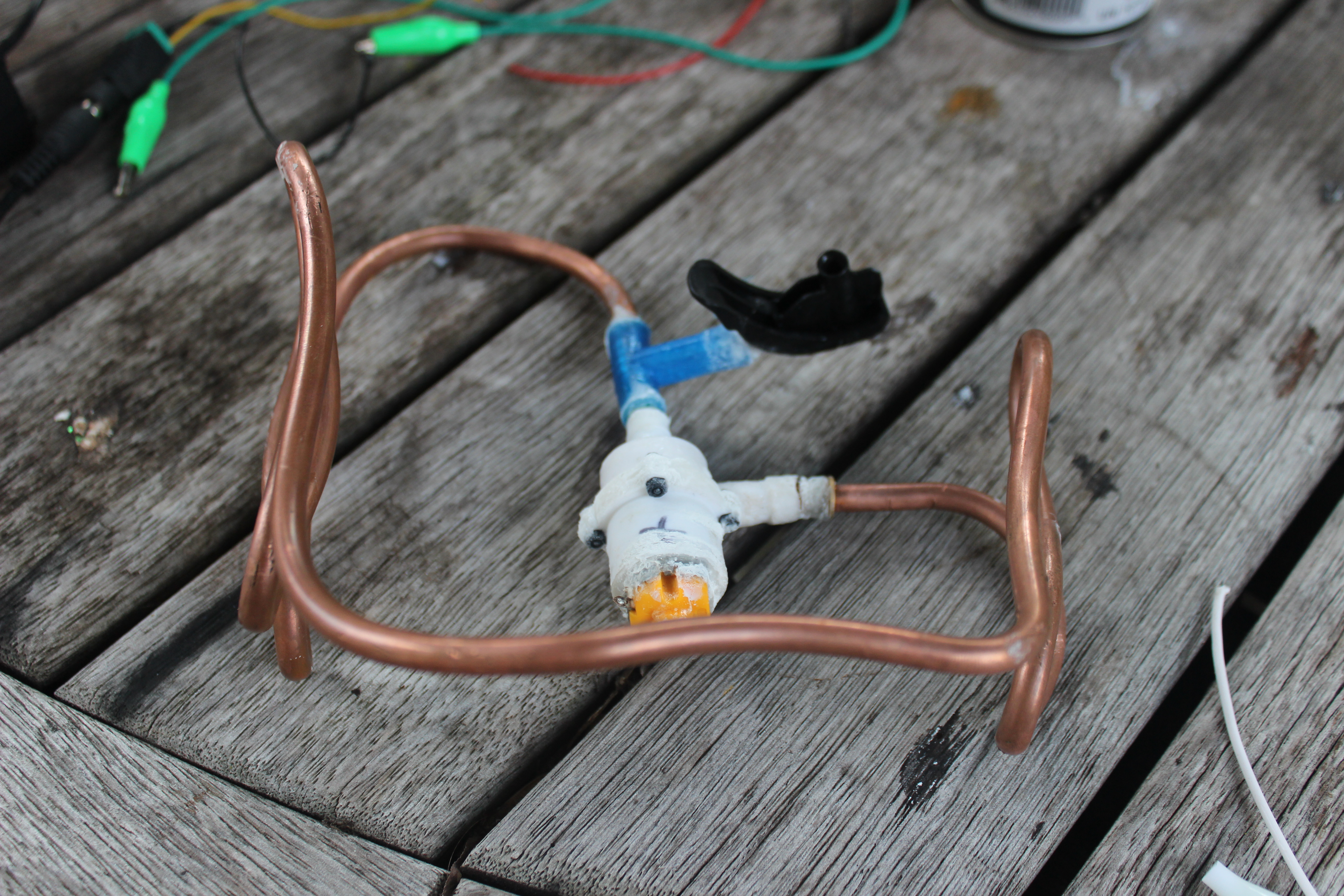
pressure–volume diagram

Vapor compression refrigeration

pressure–volume diagram

Vapor compression refrigeration
Vapor-compression refrigeration is the most widely used method for air conditioning buildings and vehicles, and is also employed in domestic and commercial refrigerators. This system works by circulating a liquid refrigerant that absorbs and removes heat from a space, undergoing phase changes to transfer the heat elsewhere. A typical VCRS consists of a compressor, condenser, expansion valve, and evaporator. The refrigerant enters the compressor as a saturated vapor, is compressed and heated, then condenses in the condenser by releasing heat to an external medium. The resulting saturated liquid refrigerant undergoes pressure reduction in the expansion valve, cooling down before entering the evaporator. Here, it absorbs heat from the air, evaporates, and returns to the compressor to complete the cycle.

after spending hours building and gluing ever single seem i could find i finally took the system outside to test it. sadly over a few hours i could not get it to work.
some of the issues i faced:
- motor overheating
- extremely small un-viewable gaps and leaks
- small cooling fan breaking
- butane not flowing through the tubing
- ineffective butane nozzle
- motor breaking

Unfortunately i'm going to have call this project a failure for now, as i just don't have the capital and materials that i need to do it justice. I will certainly return to finish this project with a later post when i can, as i think this project would perfectly demonstrate the fundamentals of refrigeration and modern cooling systems.
HTML Website Builder